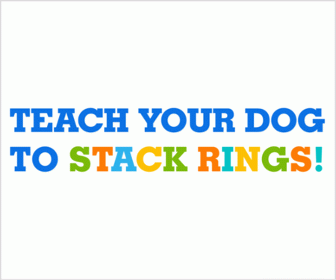Depending on the dog, potty training can be a long and frustrating process. While the training of some dogs seems to come easily and intuitively, others take what seems like months to finally "understand."
In this piece, I'll offer advice for people who are having trouble toilet training their puppies. You can quickly and easily housebreak your puppy using these tried and true methods.
Keep in mind that there is no magic wand that can instantly and simply fix your difficulties when it comes to housebreaking a puppy or breaking your dog of any negative habits. It takes time, common sense, and consistency to train a puppy. Read also: Treatment and Prevention of Dog Separation Anxiety
Some tips are provided below to aid in the process of housebreaking your puppy:
1. Hold Your Peace
Your first step should be to collect yourself and rein in your emotions. What you feel and how you act are entirely up to you.
Keep in mind that your puppy, like a small child, doesn't really understand the notion of going pee outside unless he or she has plenty of practise. Avoid placing the blame on them or taking out your frustrations and anger on them because of their inability to use the toilet independently.
When you get furious and start shouting at your dog, it will only make things worse. Getting angry and frustrated at your puppy won't help him calm down and follow your instructions to use the bathroom outside.
Your puppy's inability to relieve himself when and where you'd like him to be because of his fear and anxiety will increase as his anxiety levels rise.
Don't bother with that nonsense about giving him a bloody nose every time he steps in the incorrect hole. That's a nasty and ineffective "old school" method.
I mean, seriously, why did your puppy have to urinate inside the house? Because he had to leave, I suppose.
His tiny bladder was probably about to burst, and he realised, "I need to go, and I need to go, NOW!"
And because he couldn't open the door or notify you he had to use the restroom, what else was he supposed to do? Read more about brain training for dogs in this article… click here
Your dog isn't being spiteful or attempting to make your life difficult; he just needs to use the bathroom.
Thus, you aren't teaching your dog anything when you rub his nose in his faeces or urine.
He gets that you don't like it when he poops in front of the couch, but you haven't shown him the bathroom you'd rather he use.
You'll need to physically point out the outdoor bathroom to him.
2. Maintain Your Targeted Attention:
One of the most typical blunders made by pet owners during the potty-training process is also the most crucial one.
Most people are quick to correct their dog when he does something wrong, but slow to praise him when he does something great.
In other words, when our dog defecates in the corner of the living room, we lose our collective minds and scold him until he moves his business outside, at which point we pay little attention.
Here's a little secret: whenever your puppy relieves himself in the proper location, give him a delicious treat.
Your puppy should be rewarded with a delicious treat not thirty, but two or three seconds after he uses the outdoor bathroom. This will help him to identify going to the bathroom outside with the positive experience he had.
A wonderful tip is to keep a jar of treats outdoors near the door your dog uses so you can give it a reward whenever it begs.
Consistency is the key, so reward him each time he uses the correct bathroom.
Puppies respond quite well to being petted and stroked, so complementing your "good boy" or "good girl" with a good massage is another great way to show your approval.
Check out the brain training for Dogs course now. It’s great for eliminating any bad behaviors by tapping into your dog’s hidden intelligence... Click here…
3. Be Patient:
Experts agree that for the first eight weeks of their lives, puppies have no bladder control at all; you can try house training a puppy during this time, but don't get discouraged if you don't notice any success.
It's best to go into potty training a puppy with the understanding that it could take a while (weeks or months).
If you do fail, it's important to not beat yourself up over it; instead, learn from it and move on.
Even if your puppy hasn't shown any signs of learning, you may rest assured that he will eventually have a "aha!" moment and be fully housebroken.
4. Protect the Rug!
Your puppy may have an accident on your favourite area rug while learning where it is OK to go to the bathroom. Despite your best efforts to remove all traces of the odour, your puppy will likely return to the spot since his incredibly sensitive nose will tell him it is safe to do so.
Do yourself a favour and put the rug in a closet for the next six months; once your puppy is trained, you may bring it back down and begin using it.
5. Information Is Crucial:
You're not a professional dog trainer, so you probably have no idea how to teach your puppy anything, let alone how to potty train a puppy, and there are a million and one things you need to know.
I suggest acquiring as much assistance as you can, such as from websites, books, DVDs, and online dog-training classes; this will make the process much easier on both you and your puppy.


